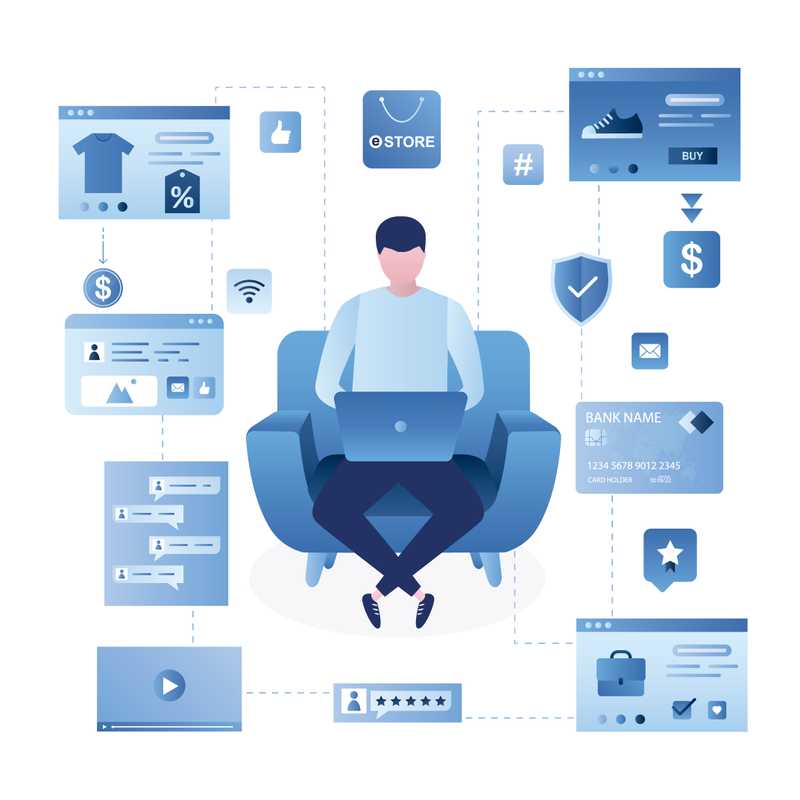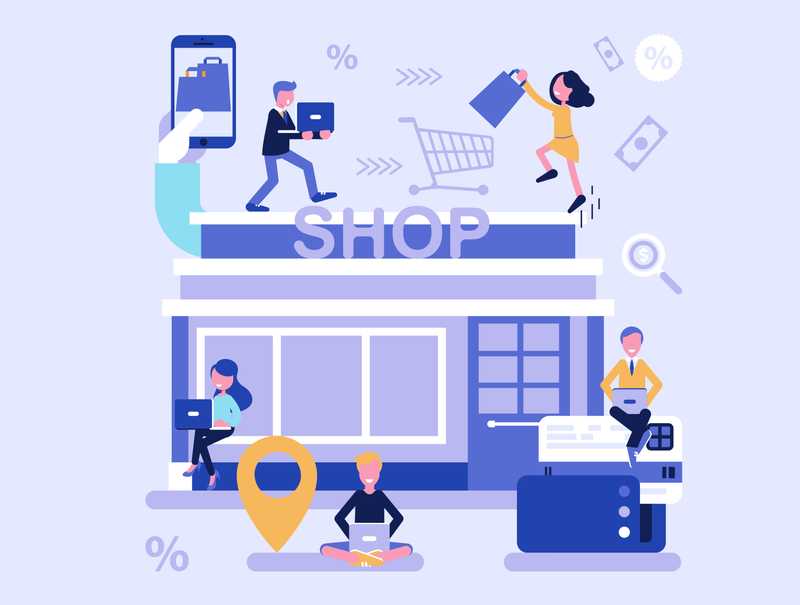How to Land a UX/UI Design Job in the E-commerce Industry

In this article
Online shopping is one of the fastest-growing sectors in retail, with estimates that global e-commerce sales will hit $4.9 trillion in 2021 and account for 17.5% of all retail sales. These numbers are projected to grow as more and more retailers build out online businesses, develop mobile platforms, and make their products and services more accessible to buyers by having an internet presence.
But simply having an e-commerce site doesn’t automatically lead to sales. UX/UI professionals have played no small part in the continued growth and success of the e-commerce industry by ensuring that e-commerce platforms are designed to be as effective as possible. Through their design work, UX designers, researchers, analysts, and managers have been crucial in helping companies make a strong first impression, improving the e-commerce user experience, and developing a user journey that will result in sales, sign-up conversions, customer loyalty, and evangelism.
“That’s the philosophy we’ve taken from the beginning,” Jeff Bezos, CEO and founder of Amazon said in an interview when asked how the company built its reputation and brand. “If you do build a great experience, customers tell each other about that. Word of mouth is very powerful.”
Learn more about the opportunities, responsibilities, and salaries of UX/UI designers in the e-commerce sector here.
How Is UX/UI Design Used in the E-commerce Industry?
-
Accessibility.
-
Highlighting the utility of a product.
-
Making an e-commerce store user-friendly.
-
Creating an enjoyable experience.
At its core, UX/UI design in the e-commerce industry isn’t too different from UX/UI design in other industries—the ultimate goal is to create a positive user experience that will lead to stronger user engagement, retention, and, depending on the product or service, conversion. But the specific applications of UX/UI design can differ greatly, and in e-commerce in particular, UX/UI designers play a significant role in helping online retailers succeed.
The work of UX/UI designers goes beyond choosing fonts, typography, and aesthetically pleasing web design—UX design is tied to customer understanding and customer service, and strong design can result in fewer points of friction, intuitive navigation, and a great experience that leads to returning customers. It’s a role that requires equal parts design acumen, problem-solving skill, and user empathy.
In the e-commerce industry, UX design might be employed in one of four different ways:
- Accessibility. A great user experience is also an accessible user experience—UX/UI designers can bolster e-commerce sales by ensuring that platforms and online stores are accessible to different categories of users, such as those with disabilities, color-blindness, or low tech literacy. Apple, for example, offers guidelines for those building apps on its platforms that include pointers on text size, weight, and color for readability; navigation design to reduce confusion; and limiting unnecessary visual effects to avoid distraction.
- Highlighting the utility of a product. A visitor to an e-commerce website is unlikely to buy a product or sign up for a service unless the design of the product pages clearly and effectively communicates their value proposition. UX/UI designers in e-commerce understand the products they’re helping sell, the users they’re designing for, and how to use design best practices to meet the needs of both stakeholders.
- Making an e-commerce store user-friendly. Once a UX designer has helped communicate a product or service’s utility, they need to ensure that the e-commerce storefront or platform is user-friendly. This means that the user interface has to be logical and intuitive; the user flow should be as frictionless as possible; and shoppers/buyers/users should not have to waste time on unnecessary clicks, a confusing checkout process, searching for product information, or long load times.
- Creating an enjoyable experience. When a product or service is available at multiple retailers, a strong UX design can help e-commerce stores differentiate themselves from competitors. Amazon is a good example of this—even though many of the products on Amazon can be bought elsewhere, the e-commerce giant offers compelling reasons to shop within its ecosystem. In addition to user-friendliness and seamlessness, some of the e-commerce UX design elements it uses to attract and retain users include consistency in design, a logical navigation menu, effective presentation of items for sale, intuitive checkout pages, and a fast and glitch-free desktop and mobile experience.
E-commerce Industry UX/UI Designer Job Roles/Responsibilities

Most UX/UI designers bring technical design skills to the table such as the ability to conduct and make sense of user research; wireframing and prototyping; interactive design; visual communication; information architecture; and proficiency with tools such as Sketch, Invision Studio, Proto.io, Webflow, Balsamiq, and Axure. And while these skills might help a designer build a visually appealing homepage or storefront, the e-commerce industry expects its UX/UI designers to be creative and empathetic problem solvers who approach design with both the organization’s mission and the users’ needs in mind.
“I think the only difference between a UX designer and what you would call a graphic designer is that one of them is building on assumptions, [while] the other is building on what the customer wants,” said Justin Amphlett, a UX designer at Wiggle. “All designers will have effectively become UX designers by now because UX is inseparable from the design process.”
Some of the key responsibilities of UX/UI designers at e-commerce organizations include:
- Conducting and/or using user research to understand what issues/pain-points users face when they engage with the e-commerce platform
- Conducting design experiments and A/B testing, listening to user feedback, and staying on top of industry trends to develop user-centered design solutions
- Understanding the goals and desired calls-to-action of an organization’s e-commerce platform and finding ways to meet those goals while still advocating for the user
- Designing a consistent user experience across mobile devices and desktop platforms
- Collaborating with UX researchers, data scientists, information architects, marketers, and engineers to test, iterate, and launch products and services that satisfy stakeholders
Get To Know Other Design Students
Sharon Yeun Kim
UX Design Intern at Colgate-Palmolive
Nicky Arthur
UX Designer at International Baccalaureate
Bibi Tanjasiri
Product Designer at Hatch
E-commerce Industry UX/UI Designer Salary
Among hiring managers, UX/UI design is one of the top five most in-demand skills, according to a LinkedIn report, with the demand expected to rise throughout 2021. And as online shopping continues to grow, so too will demand for designers who can optimize user experiences—a report from Gartner found that 64% of customers generally value the quality of customer experience over price, further highlighting the importance of strong UX/UI design to the success of e-commerce retailers.
UX/UI designer salaries are typically determined by education, years of experience, location, and organization type. As of 2021, the average base salary of an entry-level UX/UI designer in the e-commerce industry is around $80, 714. The average base salary of a senior-level UX/UI designer in the e-commerce industry is around $104, 040.
Since you’re here…
If you’re looking to move into design, having strong UX and UI skills is a major edge. Our UI/UX Design Bootcamp has earned graduates jobs with the most competitive organizations on earth, and 99.5% of our students are fully employed within 12 months of graduation. Check out our student reviews for good feels, and If you’re totally new to the field, try our free intro course.





![How To Become a Product Design Engineer [11 Step Guide]](https://www.springboard.com/blog/wp-content/uploads/2022/12/how-to-become-a-product-design-engineer-11-step-guide-380x235.jpg)